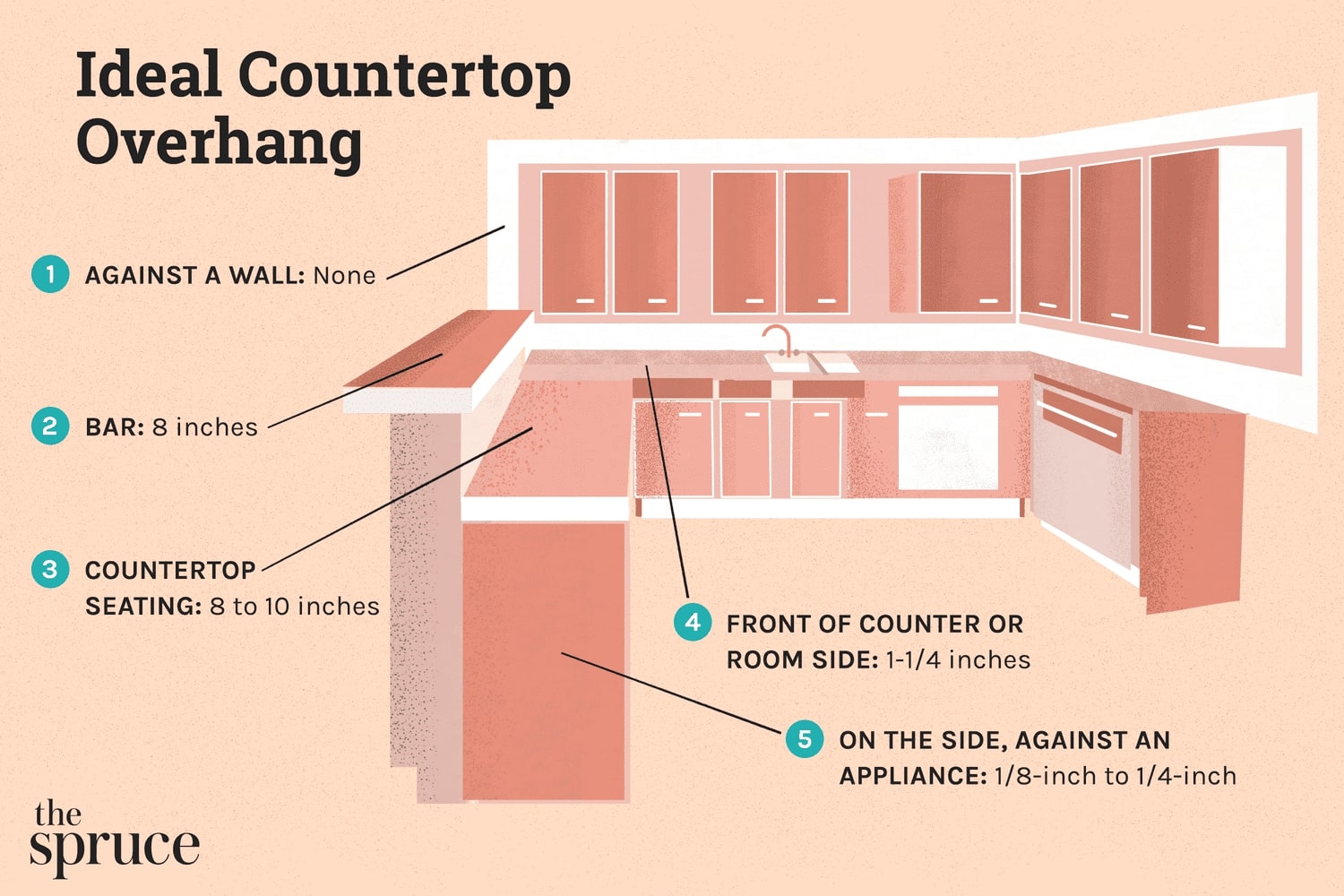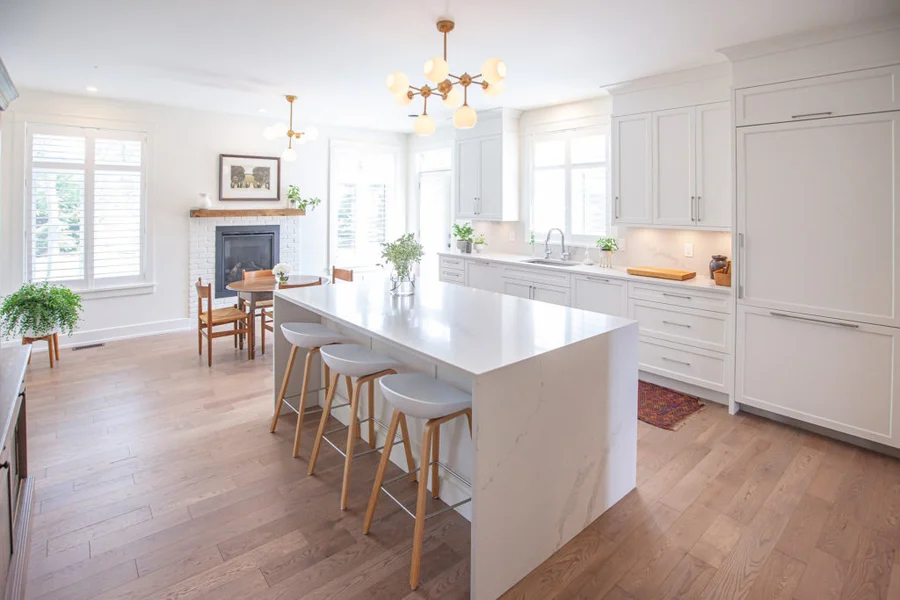When designing your dream kitchen, one detail that makes a huge difference is the countertop overhang for seating. The overhang refers to the part of the countertop that extends beyond the edge of the cabinets or island. But just how much should it extend? Let’s explore the topic in-depth to provide you with a comprehensive understanding of how much countertop overhang for seating is just right.
Understanding the Basics of Countertop Overhang
Before we delve into the details, let’s clear up the concept of countertop seating overhang. The overhang is crucial because it creates knee space that makes it comfortable for people to sit at a counter. Without it, you’d have your knees bumping into the cabinets or island!
Standard Countertop Overhang
So what’s the standard countertop overhang? The standard overhang for a kitchen countertop or an island is 1 to 1.5 inches. But when it comes to providing sufficient space for seating, the standard overhang is extended.
Overhang for Counter Seating
When you’re planning counter overhang for seating, the general rule is that you’ll need to add at least 12 inches of countertop depth to accommodate knee and leg space. If you’re considering a countertop bar, the overhang for countertop bar should be even more, usually around 15 inches. This ensures that you and your guests have plenty of room to sit comfortably.

The Minimum Counter Overhang for Seating
The minimum countertop overhang for seating space is 12 inches. However, many designers recommend 15 inches as it allows more comfort, especially for taller individuals. Remember, the minimum overhang for island seating is to ensure sufficient knee space. Anything less than 12 inches would probably make it uncomfortable for adults to sit.
Kitchen Island Overhang
When you’re designing a kitchen island with seating, the kitchen island overhang plays a big role. The recommended overhang for an island counter is about 12 to 15 inches. But do ask yourself, “is a 10 inch island overhang enough?” It might be for a child or a petite adult, but for most people, the extra few inches make a noticeable difference in comfort.
When More Overhang is Needed
There may be situations where you’d like a larger overhang. For example, if you’re using stools that have arms or if you’re accommodating for wheelchair access, you might need a deeper overhang. On the other hand, if you’re trying to maximize aisle space in a small kitchen, you might want to stick with the minimum 12 inches.
The No-Overhang Option
Although most islands and counters have an overhang, it’s not a hard and fast rule. A kitchen island with no overhang is an option, especially if you’re tight on space or prefer a cleaner design aesthetic. However, keep in mind that without an overhang, it’s less comfortable for seating.
Securing the Overhang
One important thing to remember is that a large overhang needs support to be safe. Countertops are heavy, and if they overhang too much without support, there’s a risk that they could tip or even crack. Support can come in the form of decorative brackets or hidden steel plates, depending on the design of your kitchen.
Final Thoughts
When it comes to how much countertop overhang for seating, there’s a balance to be found between comfort, functionality, and aesthetics. The standard 12 to 15-inch overhang is a good starting point for most kitchens, but don’t be afraid to adjust according to your needs.


